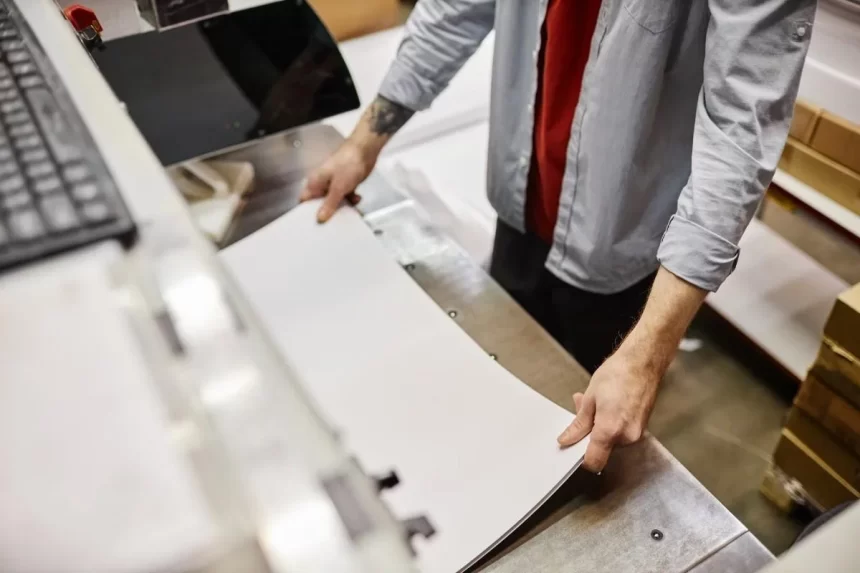In the world of business printing, being unique is essential. Beyond simple ink on paper, adding special finishes and effects can enhance the appearance of printed items. These techniques not only draw your attention but also linger in your memory and create a significant impact. In the article, we examine unique finishes such as embossing, applying foil, and spot UV coating. We examine how they add complexity, feel and an elegant touch to business documents.
Embossing
Embossing is a technique for creating elevated patterns or images on paper or various substances. It involves pressing a die into the foundational material, compressing the fibers to give it a three-dimensional appearance. Embossing creates a raised effect and depth on the surface, enhancing its appearance and making it pleasant to touch. It is commonly applied to business cards, letter paper, invitations, as well as packaging for various items.
Embossing is good because it creates a sense of luxury and significance. The elevated areas catch the light and cast shadows, making printed materials appear more beautiful and sophisticated. You can combine embossing with other techniques, such as foil stamping or standard printing, to enhance the visual impact. For businesses looking to manage their printing supplies efficiently, partnering with a reputable toner buyer can be beneficial.
Cutting and Trimming
Uses for print finishing equipment, like machines that cut and trim, makes sure the edges on printed items are sharp and exact. Machines called guillotine cutters, along with rotary trimmers and cutting systems that work by themselves, help in making paper or cardstock into specific sizes and shapes. These devices provide precise and uniform results, guaranteeing that each printed item adheres to top standards of excellence and proficiency.
Foiling
Foil stamping, also known as hot stamping, is a technique where metallic or colored foil gets applied to a surface with heat and pressure. This method creates a shiny and reflective effect that quickly grabs attention and provides printed materials with a sophisticated appearance. Often, individuals apply metallic layers such as gold, silver or copper and sometimes ones with a holographic effect. They also decide between e.dull matte appearances and bright glossy shades.
Applying foil is quite effective for highlighting logos, text or various design elements. It provides contrast and renders them more visible. It is possible to place it onto various materials, including paper, heavy cardstock, and plastic. This suggests its applicability for a wide range of printing tasks. Foil stamping is often used for business cards, invitations, certificates, packaging, and promotional materials.
Spot UV
Spot UV, which uses ultraviolet light for a coating, is when you put a shiny clear layer on certain parts of what has been printed. This special effect makes a soft difference between glossy and not-glossy surfaces, making the look more attractive and highlighting some parts of the design. Spot UV is usable on text, company logos, pictures or designs to improve how they look and make printed items stand out more.
Using spot UV is advantageous because it creates a noticeable difference in texture and appearance on the printed surface. By applying the UV coating to select areas, designers are able to produce dynamic effects that capture interest and have a memorable influence. Spot UV is often used on business cards, brochures, postcards, and packages to make them look elegant and professional.
Conclusion
Adding special finishes such as embossing, foil application, and spot UV can enhance the visual appeal of printed materials. These techniques contribute to a textured or shiny appearance that makes these items stand out and attract more attention compared to others. When companies apply unique coatings to their print jobs, it renders items such as business cards and pamphlets more unforgettable. It aids in the clearer dissemination of their information. Special finishes offer various creative possibilities for printed materials like packaging and invitations.









